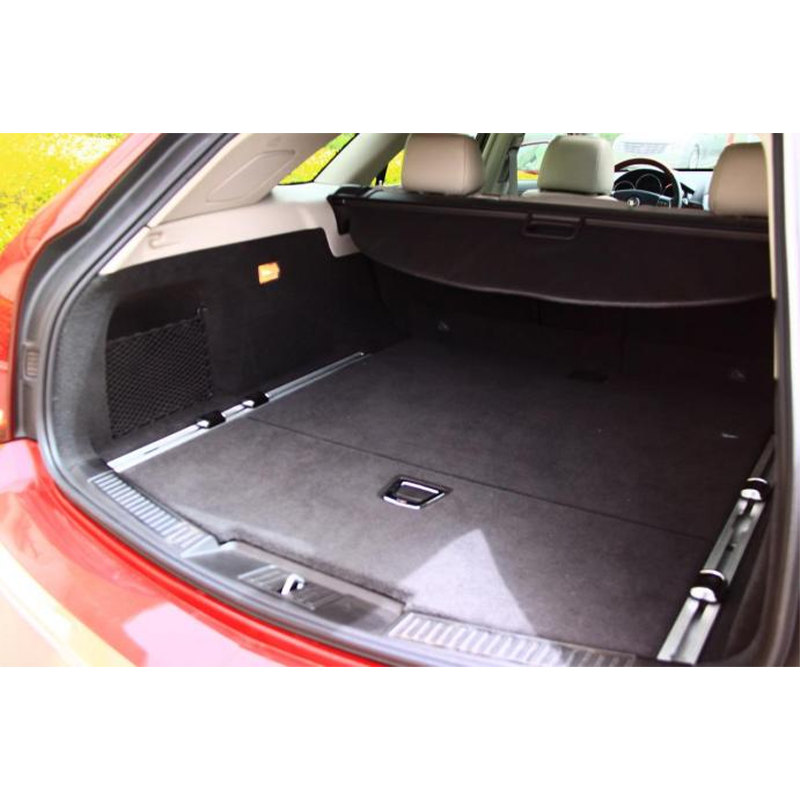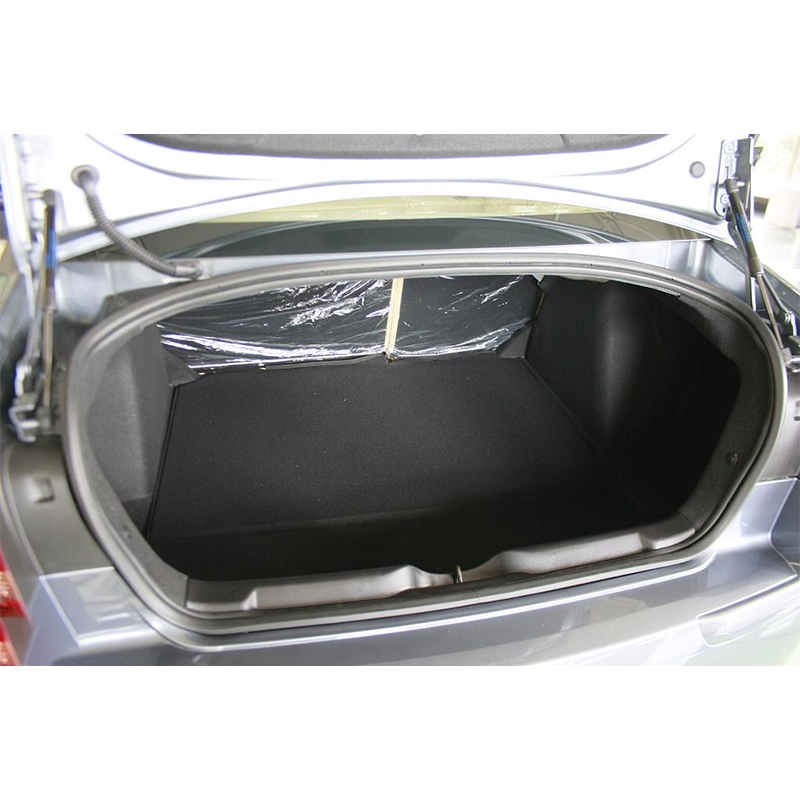
Several hidden advantages of extruded fiberglass panels!
Publish Time: 2025-09-25
Driven by the dual demands of lightweighting and environmental protection in automobiles, traditional PHC paper honeycomb panels are increasingly exposed to shortcomings, such as odor, poor temperature resistance, and mold susceptibility. However, extruded fiberglass panels (glass fiber content 5%-30%), thanks to their material properties and process innovations, are becoming an ideal alternative for applications such as spare tire covers and interior panels. This article will analyze the innovative value of this material from three perspectives: performance breakthroughs, process advantages, and application adaptability.I. Performance Breakthroughs: Addressing the Three Pain Points of Traditional Materials1. Zero Odor and Ultra-Low VOCs, Addressing Health and Safety IssuesDue to the adhesives and paper properties of traditional paper honeycomb panels, they are prone to releasing harmful gases such as formaldehyde and benzene at high temperatures, leading to odor problems in vehicles. Extruded fiberglass panels, on the other hand, utilize a composite of inorganic glass fibers and thermoplastic resins, formed through high-temperature extrusion without the need for additional adhesives. They reduce VOC emissions by over 90% compared to paper honeycomb panels and fully meet international OEM standards (such as EU ELV and China GB/T 27630). Field data shows that after adopting this material, a new energy vehicle brand's in-vehicle air quality score improved by two levels and the customer complaint rate decreased by 65%.2. Temperature resistance increased from 80°C to 150°C, eliminating the risk of burnsPaper honeycomb panels typically have a maximum temperature resistance of no more than 80°C. In summer heat or under engine compartment heat radiation, they are prone to deformation, odor release, and even pose a burn risk. Glass fiberboard significantly improves its heat resistance by optimizing the resin matrix (such as PA66, PPS) and glass fiber ratio (15%-30%):Short-term heat resistance: Withstands temperatures up to 150°C without softening (paper honeycomb panels only at 80°C);Long-term heat resistance: Withstands 1000 hours of continuous use at 120°C without degradation;Flame retardancy: UL94 V-0 certified, with a self-extinguishing time of less than 2 seconds, far exceeding the HB rating of paper honeycomb panels.3. Mildew resistance reaches Class 0, adaptable to high-humidity environmentsPaper honeycomb panels are highly hygroscopic and prone to mold growth in humid environments, resulting in reduced structural strength and odor problems. Glass fiberboard, on the other hand, boasts a closed-cell structure and inorganic material properties, with a water absorption rate of less than 0.5% (paper honeycomb panels >5%), achieving a national standard mildew resistance rating of Class 0 (the highest level). Even with long-term use in coastal areas or rainy seasons, it remains mold-free and rot-proof.II. Process Advantages: Extrusion Molding Technology Enables Efficient Production1. Integrated Molding with EPO Foam Simplifies AssemblyTraditional spare tire covers require first forming a fiberglass sheet, then securing the EPO foam via gluing or snaps. This process is complex and prone to gaps. However, extruded fiberglass sheets can be directly combined with the EPO foam during the molding process through a co-extrusion process, achieving a one-piece "sheet-foam" structure:Reduced Assembly Errors: Integrated molding eliminates gaps, improving sealing and sound insulation.Shortened Production Cycle: Single-piece production time is reduced from 120 seconds using traditional methods to 45 seconds.Reduced Overall Costs: Material utilization is increased by 15%, and labor costs are reduced by 30%.2. Flexible Glass Fiber Content Control, Balancing Performance and CostThe extrusion process allows precise adjustment of glass fiber content within a range of 5%-30%, meeting the needs of various scenarios:5%-15% glass fiber: For non-load-bearing interior components (such as door trim), achieving a balance between lightweighting and cost.20%-30% glass fiber: For load-bearing structural components such as spare tire covers and battery compartments, achieving a bending strength exceeding 240 MPa, approaching the properties of metal.3. Mirror-grade Surface Quality, Eliminating the Need for Secondary TreatmentBy optimizing mold flow paths and extrusion parameters, the surface roughness of the glass fiber board is Ra <0.8μm, enabling direct coating or fabric wrapping without the need for post-processing such as sanding or polishing. This results in a yield rate exceeding 99.5%.III. Application Adaptation: Diversified Applications from Automotive to Industrial1. Automotive: An Ideal Replacement for Spare Tire Covers and Interior PanelsA new energy vehicle company pioneered the use of extruded fiberglass panels instead of paper honeycomb panels in the Model Y:Weight Reduction: A single spare tire cover reduces weight by 1.2 kg, increasing vehicle range by 3%;Weather Resistance: 1,000 cycles tested in extreme environments from -40°C to 120°C with no cracking or deformation;Cost Optimization: Overall cost is 18% lower than paper honeycomb panels, and no replacement is required during the company's lifecycle.2. Industrial: An Innovative Solution for Lightweight Structural PartsIn logistics pallets, drone fuselages, and other applications, this material utilizes glass fiber + carbon fiber hybrid reinforcement technology to achieve enhanced performance:Logistics Pallets: Pallets with a 30% glass fiber content have a load capacity of 2 tons and are 60% lighter than wooden pallets;Drone Fuselages: A 3:7 ratio of glass fiber to carbon fiber improves impact resistance by 40% and reduces costs by 50%.3. Construction: Potential as an Environmentally Friendly Decorative MaterialExtruded fiberglass board can also be used in building curtain walls, partitions, and other applications. Its advantages include:Class A fire protection: Meets GB 8624-2012 standards, suitable for high-rise buildings;Light transmittance: By adding glass microspheres, it achieves 50%-70% light transmittance, making it an alternative to traditional glass;Corrosion resistance: Tested for 2000 hours in a salt spray environment, it shows no corrosion, making it suitable for coastal buildings.Material Innovation Drives Industry UpgradeExtruded fiberglass board, with its three core advantages of performance breakthroughs, simplified processes, and expanded application scope, not only addresses the challenges of traditional paper honeycomb panels, such as odor, heat resistance, and mildew resistance, but also redefines the manufacturing process of lightweight materials through integrated molding technology. With the dual pursuit of environmental protection and efficiency in the automotive, industrial, and construction sectors, this material is expected to become a mainstream solution for next-generation structural components, driving the industry chain towards higher value-added development.


